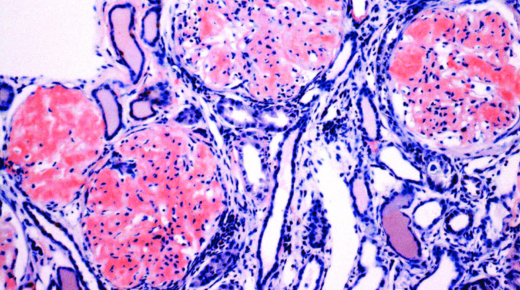1. What is Congo Red Stain
Congo Red is a dye commonly used in histological staining to identify amyloid deposits in tissues.
2. How Does Congo Red Stain Work
Congo Red binds specifically to amyloid fibrils, causing them to exhibit characteristic apple-green birefringence under polarized light microscopy.
3. Importance of Congo Red Stain
Congo Red staining is a crucial diagnostic tool for confirming the presence of amyloidosis and distinguishing it from other conditions with similar clinical presentations.
4. Histological Examination
Histological examination of tissue samples stained with Congo Red is essential for definitive diagnosis, as amyloid deposits can be visualized under the microscope.
5. Tissue Biopsy Procedure
During a tissue biopsy, a small sample of affected tissue is collected and stained with Congo Red to detect amyloid deposits.
6. Types of Amyloidosis Detected
Congo Red staining can detect various types of amyloidosis, including systemic amyloidosis (such as AL amyloidosis) and localized forms (like AA amyloidosis).
7. Clinical Applications
Congo Red staining aids clinicians in diagnosing amyloidosis, determining the extent of organ involvement, and guiding treatment decisions.
8. Specialized Techniques
Advanced techniques like immunohistochemistry and electron microscopy can complement Congo Red staining to provide additional information about amyloid composition and structure.
9. Interpretation of Results
Interpretation of Congo Red staining results requires expertise, as other substances can sometimes exhibit similar staining patterns, necessitating careful evaluation.
10. Differential Diagnosis
Congo Red staining helps differentiate amyloidosis from conditions like granulomas, collagen vascular diseases, and tumor deposits, which may mimic amyloid under microscopy.
11. Limitations of Congo Red Stain
While highly sensitive, Congo Red staining may not detect small or early-stage amyloid deposits, requiring correlation with clinical and laboratory findings.
12. Utility in Research
Congo Red staining is widely used in research settings to study amyloidosis pathogenesis, develop novel treatment approaches, and evaluate therapeutic efficacy.
13. Standardization and Quality Control
Ensuring consistent staining protocols and quality control measures is essential to minimize variability and ensure accurate interpretation of Congo Red staining results.
14. Clinical Challenges
Challenges in Congo Red staining interpretation include differentiating between amyloid subtypes and distinguishing between amyloid and non-amyloid deposits.
15. Congo Red Stain in Cardiac Amyloidosis
Congo Red staining of cardiac tissue is particularly valuable in diagnosing cardiac amyloidosis, a serious manifestation of systemic amyloidosis.
16. Renal Amyloidosis Detection
In renal amyloidosis, Congo Red staining of kidney biopsies helps assess the extent of glomerular and interstitial amyloid deposition.
17. Gastrointestinal Amyloidosis Evaluation
Congo Red staining of gastrointestinal biopsies aids in diagnosing and characterizing gastrointestinal amyloidosis, which can affect digestion and absorption.
18. Prognostic Implications
The extent and distribution of amyloid deposits detected by Congo Red staining may have prognostic implications, guiding treatment and follow-up strategies.
19. Future Directions
Continued research aims to improve Congo Red staining techniques, develop alternative amyloid-specific dyes, and explore non-invasive imaging modalities for amyloidosis diagnosis.
20. Collaboration with Pathologists
Collaboration between clinicians and pathologists is essential for accurate interpretation of Congo Red staining results and optimal management of amyloidosis patients.
21. Patient Education
Educating patients about the role of Congo Red staining in their diagnosis can enhance their understanding and involvement in treatment decisions.
22. Multidisciplinary Approach
A multidisciplinary approach involving hematologists, nephrologists, cardiologists, and pathologists ensures comprehensive evaluation and management of amyloidosis.
23. Continued Monitoring
Regular monitoring of amyloidosis patients, including repeat Congo Red staining when necessary, is crucial for assessing disease progression and treatment response.
24. Support and Advocacy
Patient support groups and advocacy organizations play a vital role in raising awareness about amyloidosis and supporting individuals affected by the condition.
Congo Red staining is a cornerstone of amyloidosis diagnosis, providing valuable information that guides clinical decision-making and improves patient outcomes. Its continued refinement and integration into clinical practice are essential for advancing the management of this complex disease.




